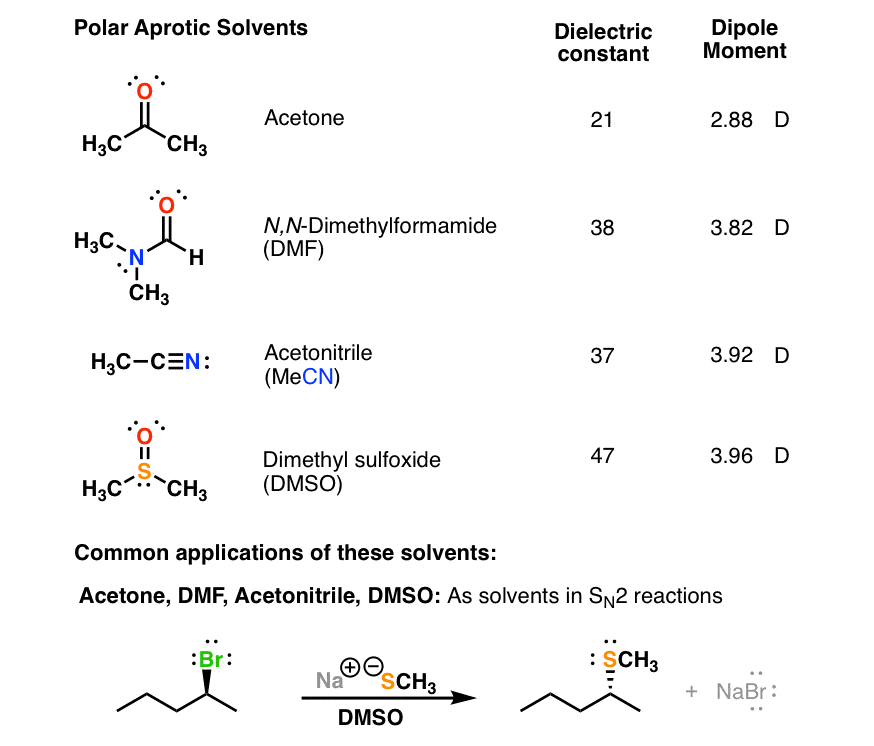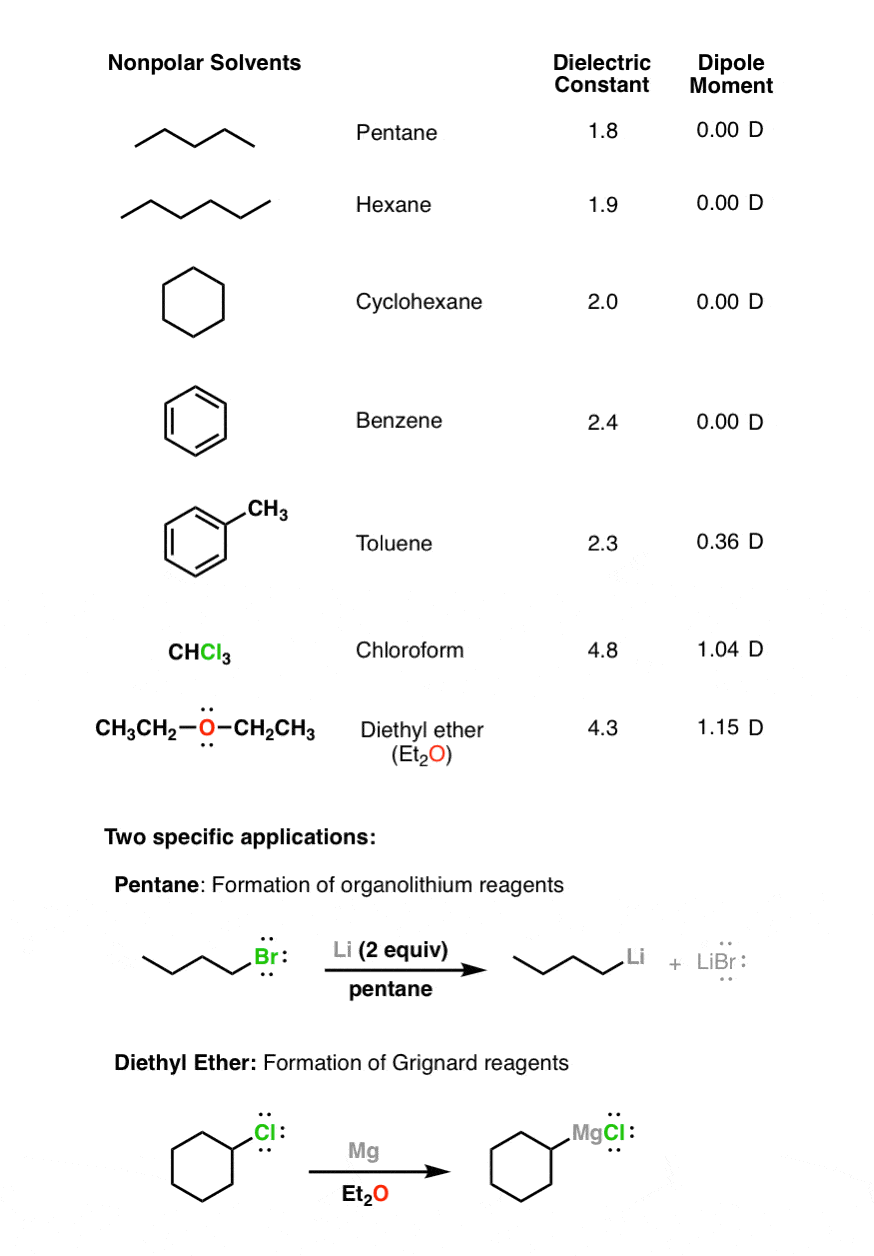Acetone Polar or Nonpolar Solvent
Add 100 mL of a chosen nonpolar solvent to another beaker. Acetic acid undergoes nearly all carboxylic acid reactions.

Polar Protic Polar Aprotic Nonpolar All About Solvents
Typically the solvent is what everything else is dissolved into.
. Sodium chloride has a NaCl molecule which breaks into Na and Cl- ions when dissolved in water. Polar solvents are often found to have a high dielectric constant although other solvent scales are also used to classify solvent polarity. Factors Affecting R f Values 1.
Nonpolar solvents cannot solvate ions and ions will. Why is acetone a better solvent than water. Water-free synthesis of Ti 3 C 2 T x MXene in ammonium dihydrogen fluoride NH 4 HF 2 dissolved in polar organic solvents eg propylene.
Acetic acid undergoes decomposition when heated above 440C to yield either methane and carbon dioxide or water and ethanone given by the equations. Ethers are a common example of organic phases in extractions. Many nonpolar solvents fall into the category of volatile organic compounds VOCs and are quite dangerous.
Add a nonpolar solvent to a new beaker. Apolar or nonpolar solvents have low dielectric constants which refers to the electric charge between the molecules being evenly distributed. Isopropyl alcohol CAS 67-63-0 is also referred to as IPA isopropanol 2-propanol and even rubbing alcohol more on that later.
Many polymeric materials having chain-like structures similar to polyethylene are known. These are solvents having a dielectric constant of more than 15. Generally a polar solvent will dissolve polar molecules.
Let this beaker sit beside the water beaker. Polar solvents can be used to dissolve inorganic or ionic compounds such as salts. Because the solvent transports the chemical along the plate the solvent utilised has a significant impact on the chemicals retention factor value.
It is common to try three to six solvent systems for the first round of. DMSO the water is already strongly. A solvent is typically thought of as liquid and that is the most common form.
The conductivity of a solution depends on the solvation of its ions. The most common three types of solvents in organic chemistry are apolar polar aprotic and polar protic. There can be both polar and nonpolar solvents.
Polar solutes will dissolve better in polar solvents and nonpolar solutes will dissolve better in nonpolar solvents. That is solutes typically will dissolve best in solvents that have the most molecular similarities. 08 then add more nonpolar solvent or switch to an even less polar combination such as pentaneether.
Nonpolar solvents include things like toluene gasoline and oils. The analytes the solvent front and the point where the mixture AB was administered are all measured relative to each other. It is also produced as a by-product in many large scale production of compounds.
The polarity differentiation is done based on the dielectric constant of the solvents. Polymers formed by a straightforward linking together of monomer units with no loss or gain of material are called addition polymers or chain-growth polymersA listing of some important addition polymers and their monomer precursors is presented in the following table. Water as a solvent dissolves sodium chloride by breaking into ions.
They can dissolve salts and other ionizable solutes. A solvent from the Latin solvō loosen untie solve is a substance that dissolves a solute resulting in a solutionA solvent is usually a liquid but can also be a solid a gas or a supercritical fluidWater is a solvent for polar molecules and the most common solvent used by living things. A non-polar solvent will dissolve non-polar molecules.
Its high diffusivity and variable density in the supercritical region replaced many conventional and toxic solvents 9It provides a green pathway for the many chemical reactions. It should be noted that the latter is quite temperature-dependent videinfra. They found that the dissolution rate decreases with increasing solvent size indicating that dissolution rate is limited by the rate of which solvent molecules penetrate.
The polar layer is referred to as the aqueous phase and it will dissolve any polar compounds. This is particularly true for nonpolar solvents. In contrast in eg.
Water is a common example of an aqueous phase in extractions. Additionally solutes will be more soluble if the molecules in the solute are smaller than the ones in the solvent. Owing to its ability to dissolve both polar and nonpolar compounds acetone is a strong solvent while other solvents can only dissolve one or the other.
It can also be a solid or gas. Shifts of the solvent residual peak2 and the water peak. And nonpolar gases such as ammonia ethanol and acetone at room temperature mostly because of their metallic core channels and surface functional groups that result in strong adsorption energies.
Solvent Impacts Retention Factors. Also any potential hydrogen-bond acceptor will tend to shift the water signal down-field. The nonpolar layer is referred to as the organic phase and will dissolve any nonpolar compounds.
Secondly since it is miscible acetone is a strong solvent ensuring it has the potential to blend in all amounts with water. Acetic acid is a polar protic solvent with a dielectric constant of 62 in its liquid form. All the ions and proteins in a cell are dissolved in water within the cell.
ScCO 2 is a promising green solvent because of its negligible toxicity and high solubility window for different kind of solutes. For binary mixtures of acetoneisopropanol a transition from swelling to dissolution occurred near acetone volume fractions of 04505. It dissolves a wide range of both polar and nonpolar soils and is often used to dissolve and remove light oils fingerprints cutting fluids flux residues carbon deposits and mold release.

Polar Protic Polar Aprotic Nonpolar All About Solvents
Polar Vs Nonpolar Solvents Identifications And Examples Psiberg

Is C3h6o Acetone Polar Or Non Polar Youtube

Why Is Acetone A Good Solvent Properties Explanation Video Lesson Transcript Study Com
No comments for "Acetone Polar or Nonpolar Solvent"
Post a Comment